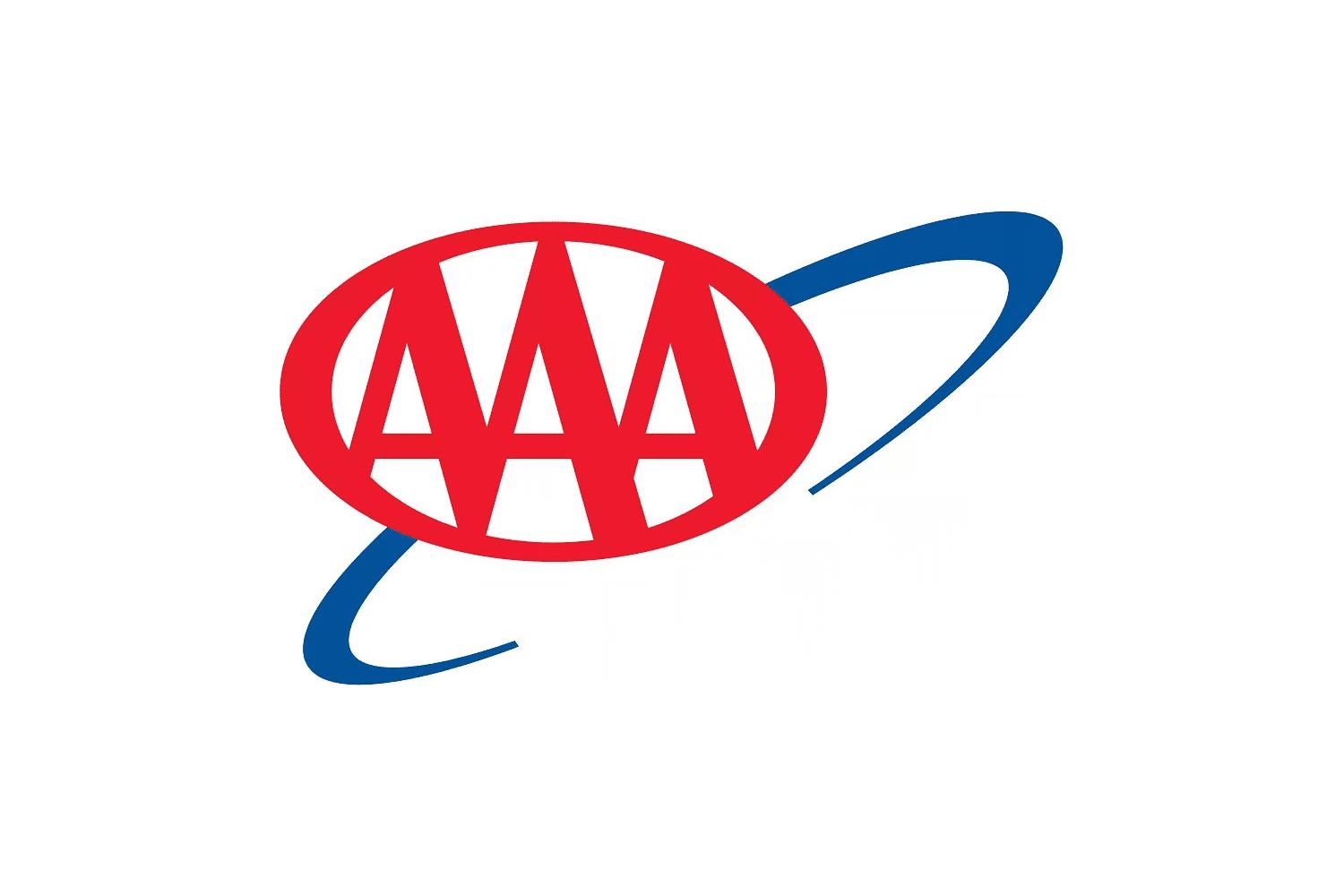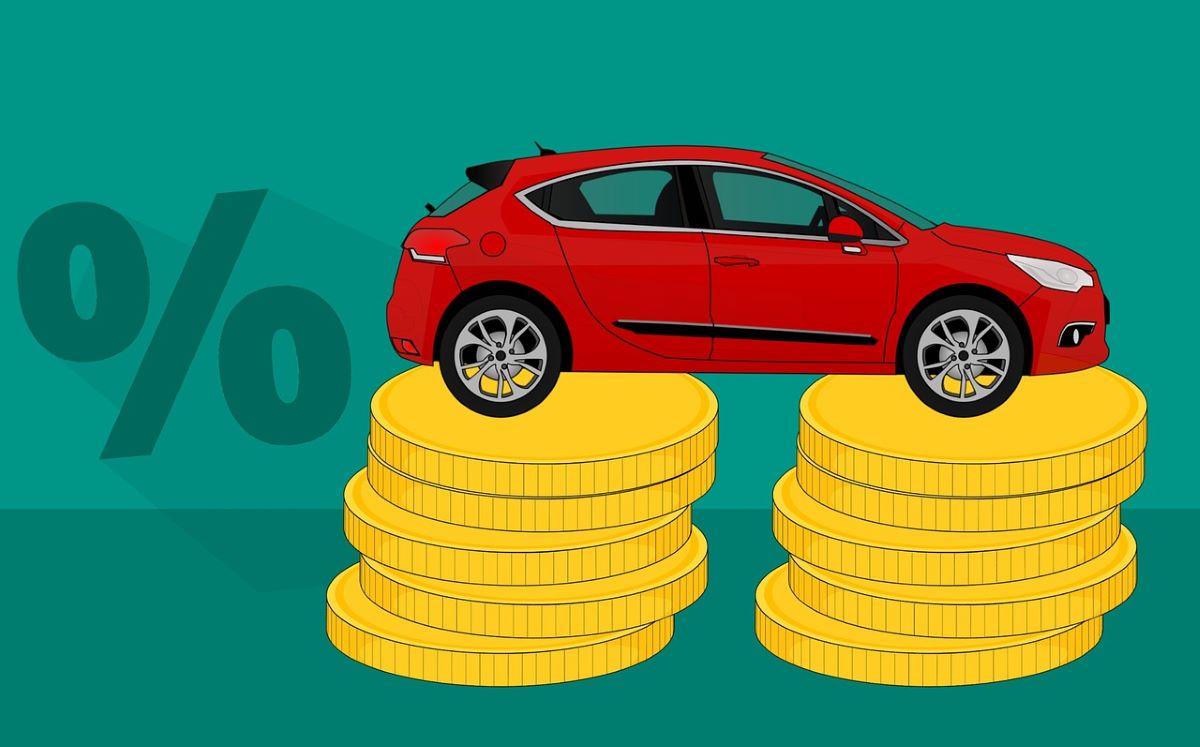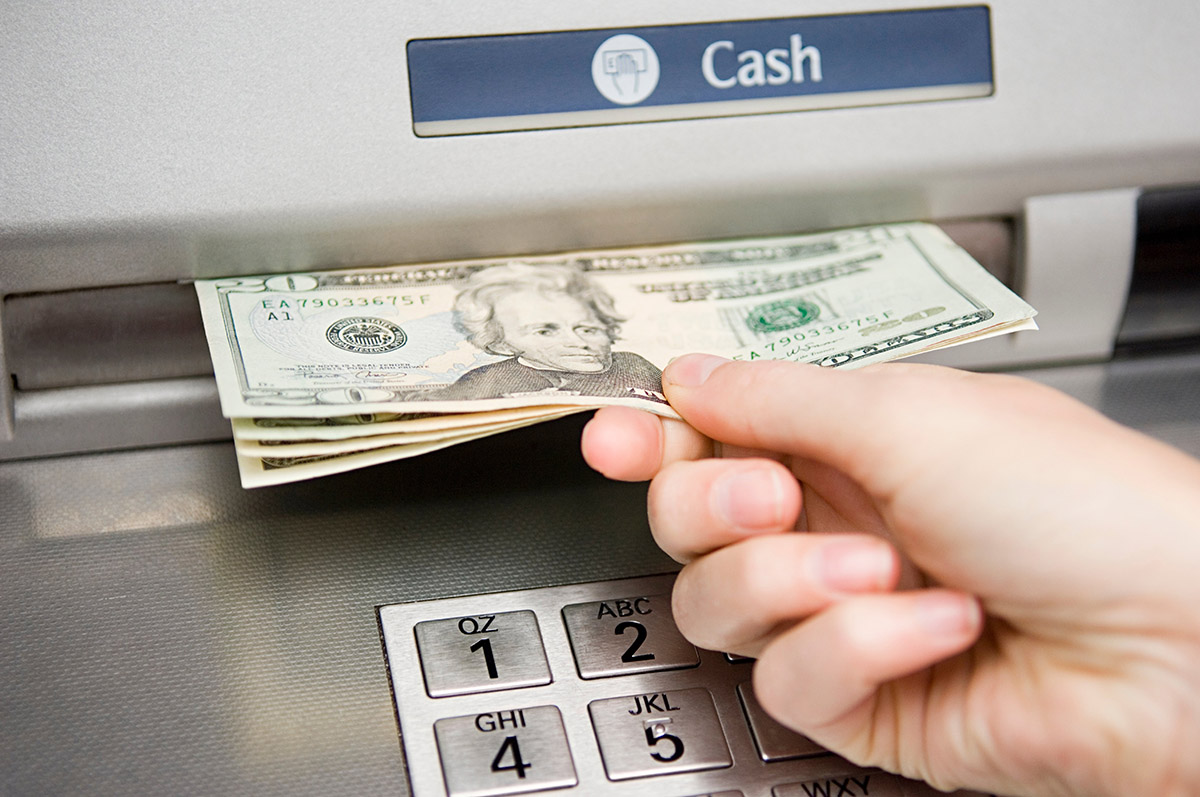

Finance
What Is Full Coverage Motorcycle Insurance?
Published: November 9, 2023
Learn about full coverage motorcycle insurance and how it can financially protect you in case of accidents or damage to your bike. Explore your options and find the right finance solution.
(Many of the links in this article redirect to a specific reviewed product. Your purchase of these products through affiliate links helps to generate commission for LiveWell, at no extra cost. Learn more)
Table of Contents
- Introduction
- Understanding Motorcycle Insurance
- What Does Full Coverage Motorcycle Insurance Include?
- Liability Coverage
- Collision Coverage
- Comprehensive Coverage
- Uninsured/Underinsured Motorist Coverage
- Medical Payments Coverage
- How Much Does Full Coverage Motorcycle Insurance Cost?
- Factors Affecting Full Coverage Motorcycle Insurance Cost
- Where to Get Full Coverage Motorcycle Insurance?
- Conclusion
Introduction
Welcome to the world of motorcycles, where freedom and adventure await at every turn. Whether you’re a seasoned rider or just starting out, it’s important to understand the ins and outs of motorcycle insurance to protect yourself and your beloved bike on the open road. One key term you may have come across is “full coverage motorcycle insurance.”
Full coverage motorcycle insurance is a comprehensive insurance policy that provides financial protection for both you and your motorcycle. It goes beyond basic liability coverage to include additional coverage options such as collision, comprehensive, uninsured/underinsured motorist, and medical payments coverage.
Getting the right insurance coverage is essential, as motorcycle accidents can result in significant injuries, property damage, and legal liabilities. By investing in full coverage motorcycle insurance, you can have peace of mind knowing that you are financially protected in the event of an accident or theft.
Now, let’s dive deeper into the world of full coverage motorcycle insurance, exploring the various coverage options available and the factors that influence insurance costs.
Understanding Motorcycle Insurance
Before we delve into full coverage motorcycle insurance, it’s important to have a basic understanding of motorcycle insurance in general. Motorcycle insurance is a contract between you and an insurance provider, designed to protect you financially in the event of an accident, theft, or other covered incidents.
Like auto insurance, motorcycle insurance provides different types of coverage options that you can choose based on your needs and budget. The two main types of motorcycle insurance coverage are liability coverage and physical damage coverage.
Liability coverage is the most basic type of motorcycle insurance and is required by law in most states. It provides financial protection if you cause an accident and are held responsible for injuries or property damage to others. This coverage helps pay for the other party’s medical bills, property repairs, and legal fees if they decide to sue you.
Physical damage coverage, on the other hand, covers damage to your own motorcycle. This coverage is optional but highly recommended, as it helps cover the cost of repairs or replacement if your bike is damaged in an accident, stolen, vandalized, or affected by natural disasters.
It’s important to note that liability coverage alone may not be sufficient to fully protect you and your motorcycle. That’s where full coverage motorcycle insurance comes into play, offering a more comprehensive level of protection that extends beyond liability coverage.
Now that we have a general understanding of motorcycle insurance, let’s explore what exactly full coverage motorcycle insurance entails and the specific coverage options it includes.
What Does Full Coverage Motorcycle Insurance Include?
Full coverage motorcycle insurance provides an extensive level of protection that goes beyond the basic liability coverage. It typically includes the following coverage options:
-
Liability Coverage: This coverage helps protect you financially if you cause bodily injury or property damage to others in an accident. It includes bodily injury liability, which covers medical expenses, lost wages, and legal fees of the injured party, and property damage liability, which covers the repair or replacement of damaged property.
-
Collision Coverage: Collision coverage pays for repairs or replacement of your motorcycle if it’s damaged in an accident, regardless of who is at fault. This coverage applies to collisions with other vehicles or objects, such as trees or guardrails.
-
Comprehensive Coverage: This coverage protects your motorcycle against non-collision incidents, such as theft, vandalism, fire, or natural disasters. It covers the cost of repairs or replacement if your bike is stolen or damaged by events beyond your control.
-
Uninsured/Underinsured Motorist Coverage: This coverage provides financial protection if you’re involved in an accident with a driver who doesn’t have insurance or has inadequate insurance to cover your damages. It helps pay for medical expenses, lost wages, and other damages caused by an uninsured or underinsured driver.
-
Medical Payments Coverage: Also known as MedPay, this coverage helps cover medical expenses for you and your passenger if you’re injured in a motorcycle accident. It can help pay for hospital bills, surgeries, rehabilitation, and other medical costs.
While full coverage motorcycle insurance includes these coverage options, it’s important to read the policy details and exclusions to understand the specific limitations and terms of your coverage.
Now that you know what’s included in full coverage motorcycle insurance, let’s explore the factors that can influence the cost of this comprehensive coverage.
Liability Coverage
Liability coverage is a fundamental component of any motorcycle insurance policy, whether it’s basic or full coverage. It provides financial protection if you cause an accident that results in bodily injury or property damage to others. Let’s take a closer look at what liability coverage entails.
There are two types of liability coverage included in a motorcycle insurance policy:
-
Bodily Injury Liability: This coverage helps pay for the medical expenses, rehabilitation costs, and lost wages of the other party involved in the accident if you are found at fault. It also covers legal fees if the injured party decides to sue you. Bodily injury liability coverage helps ensure that the injured party receives the necessary medical care and compensation for their injuries.
-
Property Damage Liability: If you cause an accident that damages someone else’s property, such as their vehicle, fence, or building, property damage liability coverage helps cover the repair or replacement costs. It also helps protect you from potential lawsuits filed by the owner of the damaged property.
The specific coverage limits for liability insurance vary depending on the policy and your preferences. The coverage limits typically come in two parts: per person and per accident. For example, if you have liability coverage with limits of $50,000 per person and $100,000 per accident, it means that the insurance company will pay up to $50,000 for each injured person and up to $100,000 in total for all injured parties in the accident.
Keep in mind that the state you reside in may have minimum liability coverage requirements for motorcycles. However, it’s often recommended to opt for higher coverage limits to ensure adequate protection in case of a severe accident that results in significant medical expenses or property damage.
Liability coverage is an integral part of full coverage motorcycle insurance, as it safeguards you from having to pay out-of-pocket for damages and medical bills if you’re found at fault in an accident. Next, we’ll explore the importance of collision coverage in full coverage motorcycle insurance.
Collision Coverage
Collision coverage is a vital component of full coverage motorcycle insurance. It provides financial protection for your own motorcycle in the event of a collision, regardless of who is at fault. Let’s delve into the details of collision coverage and why it’s essential to include in your policy.
Collision coverage helps cover the cost of repairs or replacement if your motorcycle is damaged in an accident involving another vehicle or object. This can include collisions with cars, trucks, bicycles, pedestrians, or stationary objects like trees, fences, or guardrails.
With collision coverage, you don’t have to worry about bearing the full financial burden of repairing or replacing your motorcycle after an accident. The insurance company will typically cover the costs, minus any deductible you have selected.
When you choose collision coverage, you’ll need to decide on a deductible amount. The deductible is the amount you agree to pay out of pocket before the insurance coverage kicks in. For example, if you have a $500 deductible and the cost of repairs for your motorcycle is $3,000, you would pay the $500 deductible, and the insurance company would cover the remaining $2,500.
It’s important to consider both your financial situation and the value of your motorcycle when deciding on a deductible amount. A higher deductible usually results in lower insurance premiums, but it also means you’ll have a larger out-of-pocket expense before the coverage takes effect.
Collision coverage is particularly valuable if your motorcycle is still relatively new or has a higher value. Repairing or replacing a damaged motorcycle can be expensive, and having collision coverage ensures that you won’t have to deplete your savings to get back on the road.
However, if your motorcycle is older or has a lower value, you might consider weighing the cost of collision coverage against the potential payout. In some cases, the premiums for collision coverage may be higher than the anticipated payout for repairs or replacement, making it a less cost-effective option.
Ultimately, it’s important to carefully evaluate your individual circumstances and preferences when deciding whether to include collision coverage in your full coverage motorcycle insurance policy.
Next, we’ll explore another important coverage option included in full coverage motorcycle insurance: comprehensive coverage.
Comprehensive Coverage
Comprehensive coverage is a significant component of full coverage motorcycle insurance, providing financial protection for your bike in various non-collision situations. Let’s take a closer look at what comprehensive coverage entails and why it’s important to have in your insurance policy.
Comprehensive coverage protects your motorcycle against damages or losses that occur outside of collisions with other vehicles or objects. It covers a range of incidents, including theft, vandalism, fire, natural disasters, falling objects, and animal collisions.
If your motorcycle is stolen, comprehensive coverage can help cover the cost of replacing it. Similarly, if your bike is damaged due to acts of vandalism, such as someone intentionally scratching the paint or defacing it, comprehensive coverage will assist in covering the repair costs.
Comprehensive coverage also comes into play in cases of fire damage. If your motorcycle is damaged or destroyed by a fire, this coverage will help cover the costs of repairs or replacement.
Additionally, comprehensive coverage protects your motorcycle from damage caused by natural disasters such as hurricanes, floods, hailstorms, or earthquakes. If your bike is affected by such events, comprehensive coverage will assist in covering the repair or replacement costs.
Another scenario that comprehensive coverage covers is damage caused by falling objects. If, for instance, a tree limb falls on your motorcycle and causes damage, your comprehensive coverage will help cover the costs of repairs.
Finally, comprehensive coverage also protects against collisions with animals. If you hit a deer or any other animal while riding and it causes damage to your motorcycle, this coverage will help cover the associated repair costs.
Similar to collision coverage, comprehensive coverage requires you to choose a deductible—the amount you’ll pay out of pocket before your coverage kicks in. Higher deductibles typically result in lower insurance premiums, but you’ll have a higher out-of-pocket cost in the event of a claim.
While comprehensive coverage is not legally required, it is highly recommended. Without comprehensive coverage, you would have to bear the full financial burden of repairing or replacing your motorcycle in non-collision situations.
When considering whether to include comprehensive coverage in your full coverage motorcycle insurance policy, assess the value of your bike and the likelihood of it being stolen or damaged in non-collision incidents. The decision should be based on your individual circumstances and risk tolerance.
Next, let’s explore another crucial component of full coverage motorcycle insurance: uninsured/underinsured motorist coverage.
Uninsured/Underinsured Motorist Coverage
Uninsured/underinsured motorist (UM/UIM) coverage is an essential part of full coverage motorcycle insurance that provides financial protection in the event of an accident with a driver who either doesn’t have insurance or doesn’t have enough insurance coverage to fully compensate for your damages. Let’s take a closer look at what UM/UIM coverage entails and why it’s important to include in your policy.
Unfortunately, not all drivers on the road are responsible or carry sufficient insurance coverage. In the event of an accident caused by an uninsured or underinsured motorist, you could be left facing significant expenses and losses without this coverage.
UM/UIM coverage helps bridge the gap between what the at-fault driver’s insurance can cover and the actual costs of your damages. It can assist in paying for medical expenses, lost wages, pain and suffering, and other damages resulting from the accident.
If the at-fault driver is uninsured, meaning they have no insurance coverage at all, your UM/UIM coverage will step in to provide the necessary compensation for your injuries and damages.
If the at-fault driver is underinsured, meaning their insurance coverage limits are insufficient to fully cover your damages, your UM/UIM coverage can help make up the difference and ensure you receive the appropriate compensation.
UM/UIM coverage provides an extra layer of protection, ensuring that you’re not left shouldering the financial burdens caused by an uninsured or underinsured driver.
In some states, UM/UIM coverage is mandatory, while in others, it’s optional. Even if it’s not required in your state, it’s highly recommended to include this coverage in your full coverage motorcycle insurance policy.
When determining the appropriate coverage limits for UM/UIM coverage, consider the potential costs associated with an accident and the likelihood of being involved in an accident with an uninsured or underinsured driver. Choosing higher coverage limits can provide greater protection and peace of mind in such situations.
Now that we’ve explored UM/UIM coverage, let’s move on to another crucial component of full coverage motorcycle insurance: medical payments coverage.
Medical Payments Coverage
Medical payments coverage, also known as MedPay, is an important aspect of full coverage motorcycle insurance that provides financial protection for medical expenses resulting from a motorcycle accident. Let’s delve into the details of medical payments coverage and why it’s beneficial to include in your insurance policy.
In the event of a motorcycle accident, medical expenses can quickly add up, leaving you with a significant financial burden. Medical payments coverage helps cover these expenses, ensuring that you receive the necessary medical care and treatment without worrying about the cost.
Medical payments coverage typically covers a wide range of medical expenses, such as hospital bills, doctor visits, surgeries, X-rays, rehabilitation services, and even funeral expenses in the unfortunate event of a fatality.
Unlike liability coverage, medical payments coverage extends to you and your passengers, regardless of who is at fault in the accident. It provides financial support for your own medical expenses and those of your passengers, up to the coverage limits specified in your policy.
In addition to covering medical expenses, some medical payments coverage may also provide coverage for lost wages if you’re unable to work due to injuries sustained in the accident. This can help alleviate the financial strain caused by the accident and assist in maintaining your financial stability.
Keep in mind that medical payments coverage is subject to policy limits. The coverage limits you choose determine the maximum amount the insurance company will pay for medical expenses resulting from a motorcycle accident.
When deciding on the coverage limits for medical payments coverage, consider your healthcare needs, the potential costs of medical treatment, and the potential financial impact of being unable to work while recovering from injuries sustained in an accident.
While medical payments coverage is not mandatory in all states, it is highly recommended to include it in your full coverage motorcycle insurance policy. It provides an additional layer of financial protection and peace of mind, ensuring that you and your passengers are covered for medical expenses resulting from an accident.
Now that we have explored medical payments coverage, let’s move on to discussing the factors that can influence the cost of full coverage motorcycle insurance.
How Much Does Full Coverage Motorcycle Insurance Cost?
The cost of full coverage motorcycle insurance can vary based on several factors, including your location, age, riding experience, type of motorcycle, coverage limits, and your driving record. Let’s explore these factors and their impact on the cost of full coverage motorcycle insurance.
1. Location: The location where you primarily ride your motorcycle plays a significant role in determining your insurance premiums. Areas with higher rates of accidents, thefts, or severe weather conditions may have higher insurance costs.
2. Age and Riding Experience: Younger riders, especially those under 25, tend to have higher insurance rates due to their perceived higher risk. Similarly, riders with limited riding experience may face higher premiums. Insurance companies generally consider more experienced riders to be less risky.
3. Type of Motorcycle: The type, make, model, and year of your motorcycle can impact insurance costs. Sports bikes or high-performance motorcycles are typically associated with higher insurance premiums due to their higher speeds and increased likelihood of accidents.
4. Coverage Limits: The coverage limits you choose for your full coverage motorcycle insurance have a direct impact on the cost. Opting for higher limits to ensure better protection will result in higher premiums.
5. Driving Record: Your driving record and history of accidents or traffic violations can impact your insurance rates. Riders with a clean driving record typically enjoy lower premiums compared to those with a history of accidents or violations.
6. Deductibles: The deductible is the amount you agree to pay out of pocket before your insurance coverage kicks in. Choosing a higher deductible can result in lower insurance premiums, but it also means you’ll have a higher out-of-pocket expense in the event of a claim.
7. Additional Coverage: If you choose to include extra coverage options in your full coverage motorcycle insurance, such as roadside assistance or accessory coverage, these additional features can increase the overall cost of the policy.
It’s important to note that the cost of full coverage motorcycle insurance can vary significantly from one individual to another. To determine an accurate premium for your specific situation, it’s best to request quotes from multiple insurance providers and compare the options.
By considering these factors and shopping around for the best rates, you can find a full coverage motorcycle insurance policy that offers the protection you need at a price that fits your budget.
Now that you have an idea of the factors that can impact the cost of full coverage motorcycle insurance, let’s explore where you can obtain this type of insurance.
Factors Affecting Full Coverage Motorcycle Insurance Cost
Several factors come into play when insurance companies determine the cost of full coverage motorcycle insurance. Understanding these factors can help you anticipate and potentially manage the cost of your insurance premiums. Let’s explore some of the key factors that can affect the cost of full coverage motorcycle insurance:
-
Location: Where you live and store your motorcycle can impact insurance rates. Areas with higher crime rates, more traffic congestion, or a higher number of accidents tend to have higher insurance premiums.
-
Age: Younger riders, especially those under 25, typically face higher insurance rates due to their perceived higher risk of accidents. Insurance premiums tend to decrease as riders gain more experience and age.
-
Riding Experience: Insurance companies consider riding experience when determining premiums. Less experienced riders may face higher rates, while riders with a long history of safe riding may be rewarded with lower premiums.
-
Type of Motorcycle: The make, model, and year of your motorcycle can influence insurance costs. High-performance or sports motorcycles typically have higher premiums due to their increased speeds and risk of accidents.
-
Driving Record: Your driving record plays a crucial role in determining insurance rates. Insurance companies consider past accidents, traffic violations, and claims history when assessing the risk associated with insuring you.
-
Coverage Limits and Deductibles: The coverage limits and deductibles you select for your policy directly impact the cost of your insurance. Higher coverage limits and lower deductibles often result in higher premiums.
-
Claims History: Your claims history is a significant factor in determining insurance premiums. If you have a history of filing claims or have been involved in multiple accidents, you may be considered a higher risk and face higher premiums.
-
Annual Mileage: The distance you typically ride your motorcycle in a year can affect insurance rates. Riders who cover longer distances may be perceived as higher risk and have higher premiums compared to those who ride less frequently.
-
Additional Coverage: If you opt for additional coverage options, such as roadside assistance or accessory coverage, these extras can increase the overall cost of your full coverage motorcycle insurance policy.
It’s important to remember that each insurance company may weigh these factors differently, so it’s worth comparing quotes from multiple insurers to find the best coverage at a competitive price.
While you may not have full control over some factors, such as your age or location, you can focus on maintaining a clean driving record, choosing a motorcycle with a lower risk profile, and selecting appropriate coverage limits and deductibles to help manage your insurance costs.
Now that we’ve examined the factors influencing the cost of full coverage motorcycle insurance, let’s explore where you can obtain this type of insurance.
Where to Get Full Coverage Motorcycle Insurance?
When it comes to obtaining full coverage motorcycle insurance, you have several options to consider. Here are some common places where you can acquire this type of insurance:
-
Insurance Companies: One of the most straightforward ways to get full coverage motorcycle insurance is to contact insurance companies directly. Many insurance providers offer motorcycle insurance as part of their product lineup. It’s recommended to reach out to multiple companies to compare quotes, coverage options, and overall customer service.
-
Independent Insurance Agents: Independent insurance agents work with multiple insurance companies and can provide you with quotes and options from various insurers. They can offer personalized guidance and help you find the best full coverage motorcycle insurance policy that suits your needs and budget.
-
Online Insurance Aggregators: Online insurance aggregators allow you to compare multiple quotes from different insurance companies in one place. These platforms provide an easy and convenient way to compare coverage options and costs, helping you make an informed decision about your full coverage motorcycle insurance.
-
Motorcycle Dealerships: Some motorcycle dealerships also offer insurance services. They may have partnerships with insurance companies or have in-house insurance agents who can help you obtain full coverage motorcycle insurance for your new bike.
-
Specialty Motorcycle Insurers: There are insurance companies that specialize in motorcycle insurance. They understand the unique needs of motorcycle riders and offer tailored policies specifically designed for motorcycles, including full coverage options. These specialized insurers may offer competitive rates and customized coverage options.
Before selecting an insurance provider, it’s important to thoroughly research and consider factors such as financial stability, customer reviews, claims process, and the specific coverage options offered. Take the time to review the policy terms and ask questions to ensure you fully understand the coverage and any exclusions or limitations.
When obtaining full coverage motorcycle insurance, remember to provide accurate information about your motorcycle, riding habits, and any additional coverage needs. This will help insurance companies provide you with accurate quotes and ensure that you are adequately covered in case of an accident or other covered incidents.
Now that you know where to get full coverage motorcycle insurance, let’s conclude our exploration of this topic.
Conclusion
Full coverage motorcycle insurance provides comprehensive financial protection for both you and your motorcycle. It goes beyond basic liability coverage to include options such as collision, comprehensive, uninsured/underinsured motorist, and medical payments coverage. By having full coverage motorcycle insurance, you can have peace of mind knowing that you are financially protected in the event of an accident, theft, or other covered incidents.
Liability coverage is a fundamental component of any motorcycle insurance policy, providing protection if you cause an accident that results in bodily injury or property damage to others. Collision coverage helps cover the cost of repairs or replacement if your motorcycle is damaged in an accident, while comprehensive coverage safeguards against non-collision incidents such as theft, vandalism, and natural disasters.
Uninsured/underinsured motorist coverage protects you in accidents involving drivers who don’t have insurance or have insufficient coverage. Medical payments coverage helps cover medical expenses resulting from a motorcycle accident, ensuring that you receive the necessary medical care without worrying about the cost.
The cost of full coverage motorcycle insurance can vary based on factors such as location, age, riding experience, type of motorcycle, coverage limits, and driving record. It’s important to consider these factors and shop around for the best rates and coverage options that suit your needs and budget.
You can obtain full coverage motorcycle insurance from insurance companies, independent agents, online insurance aggregators, motorcycle dealerships, or specialty motorcycle insurers. Before making a decision, research the reputation, financial stability, and coverage options of the insurance provider to ensure you choose the right policy for your needs.
Ultimately, investing in full coverage motorcycle insurance is a wise decision to protect yourself and your motorcycle from the unexpected. It offers financial security, peace of mind, and ensures that you can continue to enjoy the freedom and thrill of the open road. Ride safe and stay protected!














